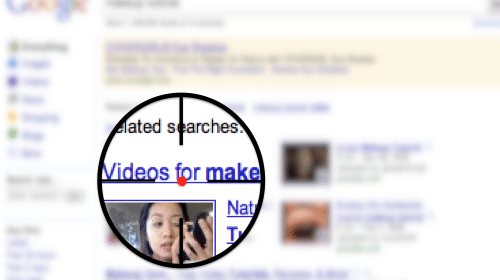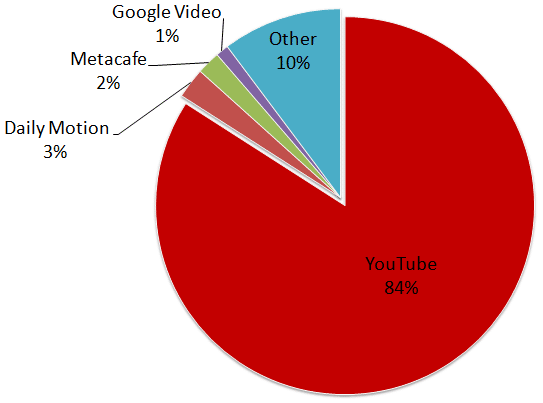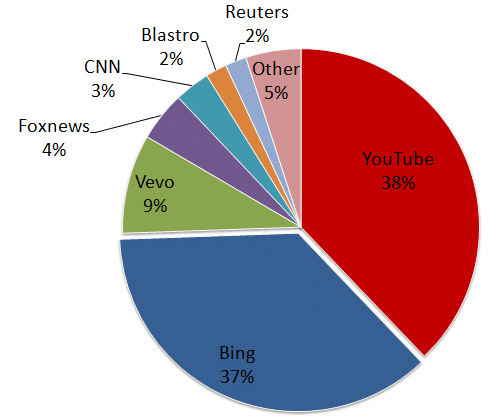
You may think that YouTube is the only game in town, but it is not. Google, and to a greater extent Bing, source hundreds of channels to populate organic universal SERPs. This post shares data from our study to reveal the extent that platforms (YouTube, MetaCafe, DailyMotion, etc…) comprise unversal SERPs. The second installment will be offered as a white paper download next month. It’s a blockbuster featuring a correlation study of query intent, tagging, and how the combination effects a video’s chances in Google and Bing SERPs. We’ll announce the white paper’s release in a SearchEngineLand article in early April.
Which Platforms Get Results
All over the globe, marketers long to see their videos display in key search engines for important keyword searches. The objective of this portion of the study was to understand what video platforms are sourced the most by Google and Bing in universal SERPs and in what percentage. We understood YouTube would play a significant role, but how big of a role and do other platforms even matter for ranking in universal SERPs?
To begin we identified 978 keywords using the YouTube keyword research tool. These keywords were selected based on their search frequency under 24 pre-defined categories.
We then ran the keyword bucket in both Google and Bing and documented every instance of video thumbnails and associated data in the SERPs. The same keyword set was put through a number of video sharing platforms and 1st page SERP ranking for each video was recorded.
Tested platforms:
It’s important to understand video is displayed in very different ways between Google and Bing universal SERPs. Within Google results we saw video thumbnails in 11 different formats or video “packs” being displayed. Below are a few of the variations we came across in Google.
Google Packs
Bing on the other hand only showed one formation, a pack of four.
What Were The Results?
We understood coming into the study YouTube would play a significant role in both Bing and Google and the data confirmed our beliefs. What’s interesting to note here is the percentage breakout difference between search engines. Not only that, but in general video was returned far less in Bing than in Google. The keyword set used here brought back a total of 2051 videos in Google and 156 in Bing.
Google Universal Video SERPs Platform Allocation
The ‘other 10%’ consisted of over 100 different video sites as well as sites internally hosting their video. These sites ranged from Vimeo, Howcast, Hulu, College Humor, IGN, to name a few.
Bing Universal Video SERPs Platform Allocation














